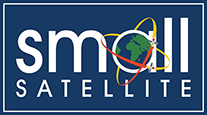Session
Session XI: Communications- Enterprise
Location
Salt Palace Convention Center, Salt Lake City, UT
Abstract
The commonplace practice of manually scheduling communications is challenged by complex and often unpredictable data needs of modern spacecraft. Automation has clear benefits to improve timeliness and efficiency of space communications. In this work we describe and experimentally demonstrate a suite of software which automates the process of scheduling contacts for satellite communications. Service is scheduled based on a spacecraft’s needs and contacts execute automatically without a human in the loop. Requests for service originate onboard the spacecraft, traverse a low-rate control channel to reach a terrestrial server, and are fulfilled by ground station assets. This work describes an experiment campaign conducted on the TechEdSat-11 technology demonstration CubeSat over five months starting in 2024. Our results from on-orbit testing demonstrate the feasibility of scheduling and executing communications service on a commercial ground station network without human intervention.
Document Type
Event
Spacecraft-Initiated Scheduling of Ground Stations: On-Orbit Results From TechEdSat-11
Salt Palace Convention Center, Salt Lake City, UT
The commonplace practice of manually scheduling communications is challenged by complex and often unpredictable data needs of modern spacecraft. Automation has clear benefits to improve timeliness and efficiency of space communications. In this work we describe and experimentally demonstrate a suite of software which automates the process of scheduling contacts for satellite communications. Service is scheduled based on a spacecraft’s needs and contacts execute automatically without a human in the loop. Requests for service originate onboard the spacecraft, traverse a low-rate control channel to reach a terrestrial server, and are fulfilled by ground station assets. This work describes an experiment campaign conducted on the TechEdSat-11 technology demonstration CubeSat over five months starting in 2024. Our results from on-orbit testing demonstrate the feasibility of scheduling and executing communications service on a commercial ground station network without human intervention.


